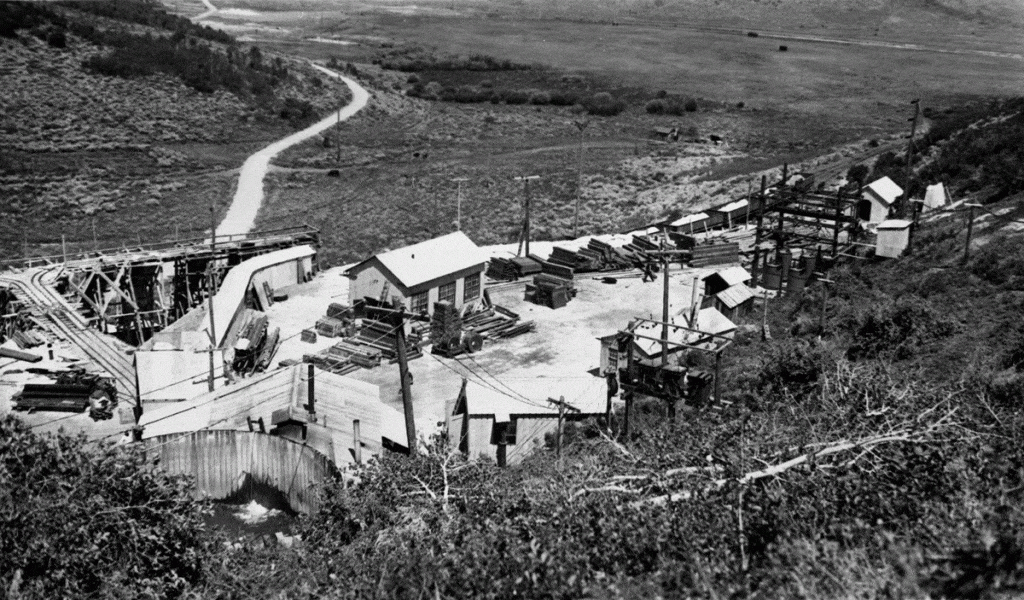Welcome back for another chapter on the history of Deer Valley before its ski resort days. In previous articles we’ve discussed the history of “Smithfield” and the Judge Mining Company’s zinc plant which were located where Deer Valley Plaza exists today. This week we’ll discuss the mines which operated in Deer Valley.
The Constellation Silver Mining Company was organized in 1889. The mine was located close to the modern-day Snowpark Lodge at the intersection of the Dew Drop and Last Chance ski runs. In addition to silver, ore samples indicated significant amounts of gold. The “gold rush” commenced. The company raised $1.5 million in capital. By 1891 the company had constructed a shaft house, hoisting works, blacksmith shops, bunkhouses and concentrator. Alas, the promise of riches proved elusive. Dogged by underground water, claim litigation and insufficient capital, the Constellation shut down in 1904.
In the mid 1920s the Park Record was promoting the potential of two new mines at the eastern edge of Deer Valley – the Queen Esther and the Park City Consolidated Mine (Park Con). The two properties were adjacent to one another. The Queen Esther was located on 250 acres at the intersection of today’s Solamere Drive and Deer Valley Drive. The claims were consolidated by Frank Hansen in 1910. The mine was named after one of his daughters and the Hansen family was associated with it until its closure. Unfortunately for everyone involved, the Queen Esther went bust in the 1930s – though not for lack of trying!
The Park Con encompassed 500 acres with the portal, primary surface structures and loading station in the same location as today’s lower docking station for the St. Regis funicular. In the photo above we are standing by the upper docking station looking down. The portal accessing the mine is in the lower left quadrant. The tracks exiting the portal are to left and lead to the loading station. To the right are the power substation and loaded gondolas. Numerous stacks of timber indicate aggressive underground construction.
The Park Con was organized in 1928 with underground construction commencing in June of that year. In January 1929 the mine was capitalized and fully financed by the Engineers Exploration Syndicate of New York. The company employed forty-two men working three shifts. By August 1929 the main shaft reached 400 feet with valuable ores confirmed. Unlike the Constellation and Queen Esther, the Park Con featured very profitable, high grade “direct shipping ore” which does not require local milling. It could be shipped directly to smelters in Midvale for processing. In September the Denver & Rio Grande railroad built a spur to the Park Con load-out facility. By October 1929, Park Con investors were ready to let the good times roll.

Credit: Park City Historical Society and Museum, Park Con Mining Collection
Tune in next week to learn of the Park Con’s fate. My appreciation to Gary Kimball, Steve Leatham, Jim Hewitson and Keith Droste for their contributions to this article.